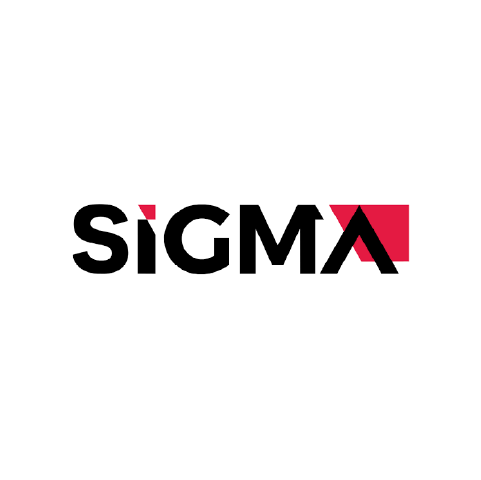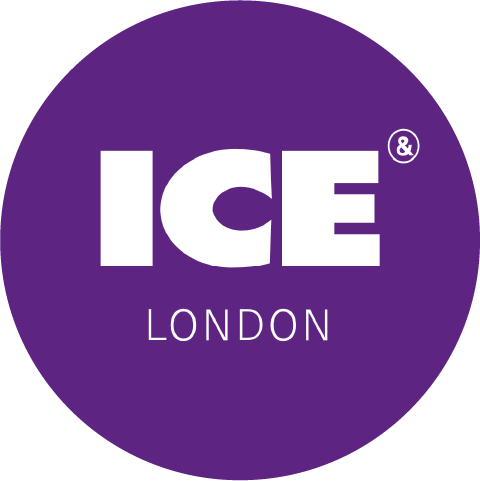CONTACT US
TO LEARN HOW OUR RISK MANAGEMENT SERVICES ENSURE
YOU STAY COMPLIANT AND AVOID POTENTIAL REGULATORY
FINES AND REPUTATIONAL DAMAGE
Risk management is a fundamental aspect that allows a company to implement an effective anti-money laundering (AML) and countering terrorism financing (CFT) framework. Every licensed entity is required to identify and assess the risks of money laundering (ML) and funding of terrorism (FT) that arise out of its activities and business.
Companies must consider specific risk factors, including customer, geographical, products, services, transactions and delivery channel risks. To monitor these aspects, you must constantly be aware of everything that is going on in the company, know your suppliers and customers well, and keep watching these aspects and your accounts to make sure you are aware of all potential risks.
As a licensed Corporate Service Provider, we are obliged to monitor and control risk for internal and client purposes continuously. With our expertise, we offer risk management services to our (prospective) clients or other third parties.
Customer Risk Assessment (CRA) is imperative in identifying the potential risks to which your company will be exposed by offering your services to your (prospective) client base. Through this risk analysis tool, you can subsequently identify your money laundering and funding of terrorism vulnerabilities and the risks it exposes you to. On this basis, your company can draw up, adopt and implement the necessary AML and counter-financing terrorism measures, controls, and policies and procedures.
We assist you with the drafting of a CRA that is specific to the Remote Gaming Sector. Depending on your jurisdiction, this may be needed as part of your eGaming license application.
The Jurisdictional/Country Risk Assessment (JRA) is a tool used to determine the level of risk posed by specific jurisdictions. While the JRA is not a stand-alone tool and is encompassed in the company’s Customer and Business Risk Assessment, we assist companies with drafting a JRA, including the applicable methodology. This can be given as a stand-alone service or with the Customer and Business Risk Assessment.
This requirement may be necessary when applying for a gaming license, depending on the country of licensing and its specific needs.
Companies may be required to conduct a Business Risk Assessment (BRA) to identify the money laundering and financing of terrorist risks they are exposed to and ensure that the measures, policies, controls and procedures adopted are sufficiently robust to prevent and mitigate the identified risks.
This requirement may be needed when applying for a gaming license, depending on the country of licensing and its specific requirements.
We assist companies with drawing up and revising their business risk assessment, customized specifically to your needs, business model and applicable local legislation of the country of registration or/and licensing.
TO LEARN HOW OUR RISK MANAGEMENT SERVICES ENSURE YOU STAY COMPLIANT AND AVOID POTENTIAL REGULATORY FINES AND REPUTATIONAL DAMAGE.
The first principle of risk management is identifying risks. This involves systematically recognizing and understanding possible risks that may impact the organization. Risk identification can be done through various methods, such as conducting risk evaluation, analyzing historical data, and engaging with associates. By identifying risks, companies can proactively plan and implement strategies to mitigate them effectively.
Once risks are identified, the following principle is to evaluate their possible impact and probability. Risk evaluation involves assessing each identified risk's significance and establishing the risk exposure level. This step helps prioritize risks based on severity and allows companies to allocate appropriate resources for risk reduction efforts. Risk calculation also enables businesses to make informed decisions about risk adoption or avoidance.
Risk calculation is analyzing and interpreting the results of risk assessments. This principle involves considering factors such as the organization's risk appetite, business objectives, and available resources. By calculating risks, businesses can determine the level of risk tolerance and make decisions regarding risk reduction strategies. It helps align risk management efforts with the overall goals and objectives of the organization.
The fourth principle of risk management is the implementation of risk mitigation strategies. Risk mitigation aims to reduce the impact or likelihood of identified risks. Companies can employ various risk mitigation techniques, such as implementing checks, developing contingency plans, transferring risks through insurance, or avoiding certain activities altogether. Effective risk reduction strategies help reduce potential losses and safeguard the
The final principle of risk management involves continuous examination and review of the efficacy of risk mitigation checks. Risk management is an ongoing process that requires regular monitoring of the implemented strategies and reassessment of risks. By monitoring risks, companies can pinpoint any changes or new risks that may arise and take timely action to address them. Regular reviews also help assess the risk management program's overall effectiveness and make necessary improvements.
The 4 C's of risk management provide a framework for managing risks effectively. These four elements are crucial in developing and implementing a robust risk management strategy.
Effective communication is vital in risk management. It involves sharing information about risks, their potential impact, and reduction strategies with all relevant stakeholders. By maintaining open and transparent communication channels, companies can ensure that everyone knows the risks and understands their role in managing them. Dialogue also facilitates the exchange of feedback and enables prompt response to emerging threats.
Collaboration refers to the active involvement and cooperation of different departments, teams, and individuals within an organization. By fostering collaboration, businesses can leverage diverse perspectives, knowledge, and expertise to pinpoint and address risks effectively. Collaborative efforts also promote shared responsibility and accountability for risk management, leading to better outcomes.
Control is about establishing and enforcing mechanisms to manage risks. It involves implementing policies, procedures, and checks that align with the organization's risk appetite and regulative requirements. Assessments should be designed to prevent, detect, and respond to risks appropriately. Regular monitoring and evaluating control effectiveness are vital to ensure ongoing risk management.
Continual enhancement emphasizes the need for a dynamic and adaptive risk management approach. Companies should continuously evaluate their risk management processes and practices to find areas for improvement. By learning from past experiences and incorporating lessons learned, companies can enhance their risk management capabilities and stay responsive to changing risk landscapes.
Risk mitigation is a critical aspect of effective risk management. Here are four common ways to mitigate risks:
Risk avoidance involves eliminating or avoiding activities or situations that pose significant risks. Companies may choose to avoid certain high-risk activities altogether to minimize exposure. For example, a gaming company may decide not to enter a market with high supervisory complexities and associated risks. By avoiding risks, companies can prevent potential negative consequences altogether.
Risk reduction aims to minimize the impact or likelihood of identified risks. This can be achieved through implementing control checks, enhancing security protocols, or improving operational processes. For instance, a gaming company may invest in advanced cybersecurity systems and regular vulnerability inspections to reduce the risk of data breaches. Risk reduction strategies focus on proactively mitigating risks and limiting their potential consequences.
Risk transfer involves shifting the responsibility for managing certain risks to external parties. This can be done through contractual agreements, such as insurance policies or outsourcing arrangements. For example, a gaming company may transfer the risk of property damage due to natural disasters to an insurance provider. By transferring risks, corporations can shield themselves financially and reduce the direct impact of specific risks.
Risk acceptance is the conscious decision to acknowledge and tolerate certain risks. It typically applies to risks deemed acceptable within the organization's risk appetite. While accepting risks does not involve active diminution, it is essential to clearly understand the potential consequences and establish contingency plans to manage them effectively. Risk acceptance allows corporations to focus resources on higher-priority risks while acknowledging that some risks cannot be eliminated entirely.
Effective risk management involves several key concepts that help corporations address risks proactively. Here are three essential concepts:
RISK IDENTIFICATION
Risk identification is recognizing and understanding possible risks that may affect an organization. This concept emphasizes the importance of systematically identifying risks through various methods, such as risk evaluations, data analysis, and stakeholder engagement. By identifying risks, corporations can develop a comprehensive understanding of their potential threats and take appropriate actions to manage them effectively.
RISK ASSESSMENT
Risk estimation involves evaluating the significance of identified risks and determining their potential impact and likelihood. This concept focuses on assessing risks based on severity and the probability of prioritizing resources and efforts. Through risk evaluations, firms gain insights into the level of risk exposure and can make informed decisions about risk acceptance, avoidance, or mitigation strategies.
RISK MITIGATION
Risk mitigation aims to reduce the impact or likelihood of identified risks. This concept emphasizes implementing strategies and procedures to minimize potential losses and safeguard the organization's assets and reputation. Risk mitigation strategies may include implementing checks, developing contingency plans, or transferring risks through insurance. Effective risk mitigation requires ongoing monitoring and review to ensure the implemented actions remain effective in changing risk landscapes.
A key element of risk management is the risk management process itself. The risk management process provides a structured framework for firms to pinpoint, rate, mitigate, and monitor risks. It involves several interrelated steps that guide risk management efforts:
1. RISK IDENTIFICATION
Identifying possible risks that may affect the organization.
2. RISK ASSESSMENT
Evaluating the significance of identified risks and determining their potential impact and likelihood.
3. RISK MITIGATION
Implementing strategies and checks to minimize the impact or probability of identified risks.
4. RISK MONITORING
Continuously monitoring the effectiveness of risk mitigation measures and assessing changes in risk landscapes.
5. RISK REVIEW
Periodically reviewing the overall effectiveness of the risk management program and making necessary improvements.
The risk management process ensures that firms have a systematic approach to managing risks, enabling them to make informed decisions and allocate appropriate resources. It provides a structured way to recognize and rate risks, implement mitigation strategies, and continuously monitor and review risk management efforts. By following the risk management process, corporations can enhance their risk awareness and effectively safeguard their assets, reputation, and business objectives.
Risk management is essential because it protects corporations from financial risk, ensures regulatory compliance, mitigates operational risks, safeguards against external threats, and enhances strategic decision-making capabilities. By implementing effective risk management practices, corporations can proactively identify, rate, and mitigate risks, leading to better business outcomes and long-term sustainability.
Risk management is crucial for corporations in various industries, including the gaming industry. Here are several reasons why risk management is essential:
Effective risk management helps organizations protect their financial resources. Organizations can minimize potential losses and ensure the stability of their financial position by identifying and mitigating financial risks, such as market volatility or operational inefficiencies. This is particularly relevant in the gaming industry, where financial risks can arise from factors such as supervisory changes or economic downturns.
Risk management plays a vital role in ensuring regulatory compliance. In the gaming industry, licensed entities are required to identify and assess risks related to money laundering and terrorist financing. By implementing effective risk management strategies, organizations can meet supervisory requirements, avoid penalties, and maintain their license status. Compliance with regulations is essential for building trust with customers and stakeholders.
Operational risks, such as system failures, security breaches, or strategic management errors, can significantly impact an organization's operations and reputation. Risk management helps identify and mitigate these risks by implementing robust checks, contingency plans, and security measures. By addressing operational risks proactively, organizations can maintain operational continuity and protect their reputation.
External risks, such as natural disasters or geopolitical uncertainties, can threaten organizations significantly. Risk management enables organizations to identify and assess external risks and develop appropriate mitigation strategies. By being prepared for such risks, organizations can minimize disruptions to their operations, protect their assets, and ensure business continuity.
Effective risk management gives organizations valuable insights into potential risks and their impact. Organizations can make informed choices and develop robust strategies by considering risks in strategic decision-making processes. Risk management enhances the ability to identify and evaluate risks associated with new opportunities or initiatives, allowing organizations to pursue growth while managing potential threats.


























